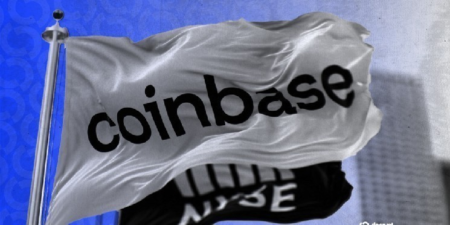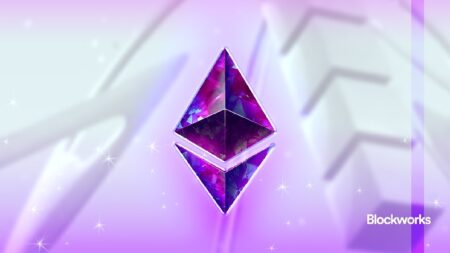Web3 publishing app Mirror is being acquired by Paragraph, a competing platform.
Mirror’s team will continue to operate independently and will shift its focus to developing “Kiosk,” a Web3 social app based on Farcaster that blends blockchain and e-commerce.
Mirror and Paragraph will eventually merge into a single, unified product suite according to Paragraph’s founder.
Paragraph, the company behind a suite of blockchain-based publishing tools, has acquired Mirror, its biggest competitor in the Web3 creator space.
The Mirror team will continue to operate as a separate company but is pivoting to focus exclusively on Web3 social media. The team’s main project post-mirror will be “Kiosk,” a Twitter-like micro-blogging platform based on the Farcaster protocol.
Mirror was one of the breakout stars of blockchain’s foray into the creator economy. The platform launched in 2020 and offers writers the ability to monetize their work by minting individual articles as NFTs. It was designed as a more decentralized and censorship-resistant alternative to Web2 publishing tools like Medium.
Paragraph was released in 2022 with similar functionality to Mirror, but it was more akin to Substack, focusing on newsletters and other publications rather than one-off articles.
Paragraph founder Colin Armstrong says that his product differed from Mirror, at least initially, in that it tried to appeal more to a Web2 audience. Armstrong, who has written for tech publications in addition to working as an engineer at Google and Coinbase, says he also focused his product more on referral programs and other features to help authors widen their distribution. Mirror, meanwhile, managed to develop a stronger brand and design language, said Armstrong.
Ultimately, Mirror and Paragraph “have evolved and then ended up somewhat in a similar place,” said the Paragraph founder. “I think for users it’s often not a clear choice, which one to go with.”
Mirror, meanwhile, has shifted much of its focus to Kiosk, its Web3 social platform.
“The vision for Kiosk is to be the synthesis of social and commerce,” said Mirror founder Denis Nazarov. Nazarov will remain as an “advisor” to Paragraph, but he and the rest of his team have sold the product so that they can focus more on their new platform.
Armstrong says Paragraph’s user base is “substantially smaller” than Mirror’s, and his three-person team is half the size of Mirror’s six-person operation. Neither team disclosed the terms of the acquisition, but Armstrong says the plan was proposed by Union Square Ventures, an investor in both companies.
“Everyone is very with the outcome. Mirror gets to pursue their new product, and the Mirror product gets to continue under someone who’s fully dedicated to publishing,” said Armstrong. “Obviously, it’s great for us because it elevates our user base and products to a pretty large degree.”
According to Armstrong, Mirror and Paragraph will eventually be merged into a single, streamlined product.
“We want to combine the products at some point, but in the short to medium term we are just going to be chatting with the top creators on both products just to determine what people love on each,” he said.
Welcome, Kiosk
Kiosk is the Mirror team’s attempt to infuse blockchains and e-commerce more deeply into social media.
It is technically a “client” for accessing Farcaster, which is an X-like app built on Ethereum. Clients like Kiosk act like unique lenses for viewing Farcaster’s underlying data; In addition to providing more rich views of Farcaster content, clients can imbue extra functionality and use-cases into the protocol.
“There’s this potential for an experience where you not only see what people are saying, what they’re liking and who they’re following – but also what assets they are buying,” said Nazarov. “We think that the whole idea of asset ownership and collection is not just transactional, it’s also social.”
Mirror boasted a polished interface by crypto industry standards when it first launched, and Nazarov says he plans to bring a similar design philosophy to Kiosk.
With Mirror, “we were one of the first web3 products that really brought strong product design, brand, and go-to-market DNA – which I think is still quite rare in the ecosystem – combined with a deep understanding of the potential of the technology,” said Nazarov. “We learned it’s really powerful to combine a social container – so, telling a story – but then embedding this economic call to action.”
Kiosk’s main function will be to make it easier for users to embed digital assets directly into their social media posts. One could imagine a post that references an NFT: Whereas a conventional tweet or Facebook post would just contain a jpeg image representing the NFT, Kiosk would bake extra blockchain features directly into the image – such as the ability to view the NFT’s blockchain address, or a feature to buy it directly via the post.
“I think a lot of what held back crypto growing to the next concentric circle of a million, 10 million users, was UX,” said Nazarov. UX stands for user experience. “Seeing products like Farcaster pioneer a mobile native experience, we think that there’s this big opportunity for this unified social experience that brings e-commerce natively to it.”
Read the full article here









